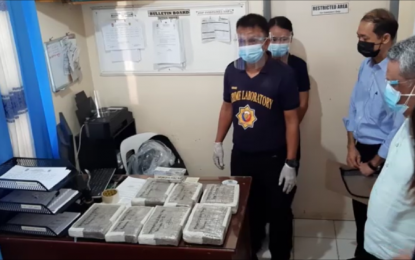Marking of seized drugs in proving chain of custody
Dangerous Drugs Board Regulation No. 1, Series of 2002, which implements R.A. No. 9165, defines chain of custody as "the duly recorded authorized movements and custody of seized drugs or controlled chemicals or plant sources of dangerous drugs or laboratory equipment of each stage, from the time of seizure/confiscation to receipt in the forensic laboratory to safekeeping to presentation in court for destruction." A crucial step in proving chain of custody is the marking of the seized drugs or other related items immediately after they are seized from the accused. "Marking" means the placing by the apprehending officer or the poseur-buyer of his/her initials and signature on the items seized. Marking after seizure is the starting point in the custodial link; hence, it is vital that the seized contraband be immediately marked because succeeding handlers of the specimens will use the markings as reference. The marking of the evidence serves to separate the marked evidence from the corpus of all other similar or related evidence from the time they are seized from the accused until they are disposed of at the end of the criminal proceedings, thus preventing switching, "planting," or contamination of evidence.[1]
A crucial step in proving chain of custody is the marking of the seized drugs or other related items immediately after they are seized from the accused. "Marking" means the placing by the apprehending officer or the poseur-buyer of his/her initials and signature on the items seized. Marking after seizure is the starting point in the custodial link; hence, it is vital that the seized contraband be immediately marked because succeeding handlers of the specimens will use the markings as reference. The marking of the evidence serves to separate the marked evidence from the corpus of all other similar or related evidence from the time they are seized from the accused until they are disposed of at the end of the criminal proceedings, thus preventing switching, "planting," or contamination of evidence.[1]
 A crucial step in proving chain of custody is the marking of the seized drugs or other related items immediately after they are seized from the accused. "Marking" means the placing by the apprehending officer or the poseur-buyer of his/her initials and signature on the items seized. Marking after seizure is the starting point in the custodial link; hence, it is vital that the seized contraband be immediately marked because succeeding handlers of the specimens will use the markings as reference. The marking of the evidence serves to separate the marked evidence from the corpus of all other similar or related evidence from the time they are seized from the accused until they are disposed of at the end of the criminal proceedings, thus preventing switching, "planting," or contamination of evidence.[1]
A crucial step in proving chain of custody is the marking of the seized drugs or other related items immediately after they are seized from the accused. "Marking" means the placing by the apprehending officer or the poseur-buyer of his/her initials and signature on the items seized. Marking after seizure is the starting point in the custodial link; hence, it is vital that the seized contraband be immediately marked because succeeding handlers of the specimens will use the markings as reference. The marking of the evidence serves to separate the marked evidence from the corpus of all other similar or related evidence from the time they are seized from the accused until they are disposed of at the end of the criminal proceedings, thus preventing switching, "planting," or contamination of evidence.[1]In People v. Sanchez,[2] the Supreme Court explained that the "marking" of the seized items - to truly ensure that they are the same items that enter the chain and are eventually the ones offered in evidence - should be done (1) in the presence of the apprehended violator (2) immediately upon confiscation.[3] The High Court explained therein that [t]his step initiates the process of protecting innocent persons from dubious and concocted searches, and of protecting as well the apprehending officers from harassment suits based on planting of evidence under Section 29 and on allegations of robbery or theft.
Moreover, in People of the Philippines v. Merlita Palomares y Costuna,[4] the Supreme Court acquitted the accused for the prosecution's failure to clearly establish the identity of the person who marked the seized drugs; the place where the marking was made; and whether the marking had been made in the accused's presence.
[1] See People v. Alejandro, G.R. No. 176350, August 10, 2011.
[2] 590 Phil. 214, 241 (2008), citations omitted.
[3] The Supreme Court held in People v. Resurreccion (G.R. No. 186380, October 12, 2009, 603 SCRA 510) that "marking" upon immediate confiscation contemplates even marking at the nearest police station or office of the apprehending team.
[4] G.R. No. 200915, February 12, 2014.



